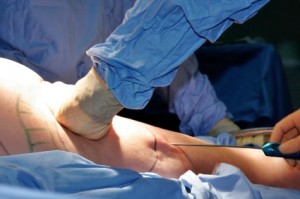While liposuction is the most commonly performed plastic surgery procedure around the world, it is exposed to the same basic risk of any other plastic surgery operation….the risk of dissatisfaction and the need for revision. There is no way to know the exact rate of revision for liposuction but surgeon estimates have it as high as 15% to 20%. Such estimates will vary widely amongst surgeons and is also influenced by the location and amount of liposuction performed. For example, liposuction of the neck would have a substantially lower risk of revision than that of the abdomen for example.

Liposuction is a method for body contouring and not a weight loss method per se. It unquestionably is most effective for thinner or more weight-appropriate people who have diet and exercise-resistant pockets of fat. In other words, liposuction is for fat collections that make one look disproportionate rather than someone who is simply overweight. (who often looks just proportionately big) Classic areas include the saddle bags and knees which one has had as long as they can remember and never changes no matter how much one diets and exercises. (congenital fat disproportion) Other good candidates include the abdominal and flank areas which have developed over the years and one wants some immediate body contouring results. (dietary fat disproportion)
Despite the ideal indications for liposuction, it can be used successfully as part of a weight loss program. One should have lost a significant amount of weight or at least 50% of their desired weight loss goal on their own. Ideally one should be within 15 to 20 lbs of their realistic weight target. Body charts based on height and weight are not always realistic for some people and one may have to readjust their weight target to their ‘physiologic’ weight, the weight that one can realistically maintain once reached without oppressive diet and exercise regimens.
Since fat is where many toxins are stored, a detox program before having liposuction can be very useful in the weight loss patient. This alone will result in a few lbs. of weight loss. Once liposuction is done, more weight loss will occur from the fat that is removed. Additional fat will be lost in the healing phase due to the catabolic effects of healing for up to six weeks after surgery. Longer-term appetite suppression may also occur due to altered leptin levels with the fat loss.
Liposuction has a useful role in fat reduction in a variety of body conditions. Having a satisfying result and limiting the potential need for a revisional procedure depends on good patient selection and education about what the procedure can and cannot do.
Dr. Barry Eppley
Indianapolis, Indiana


